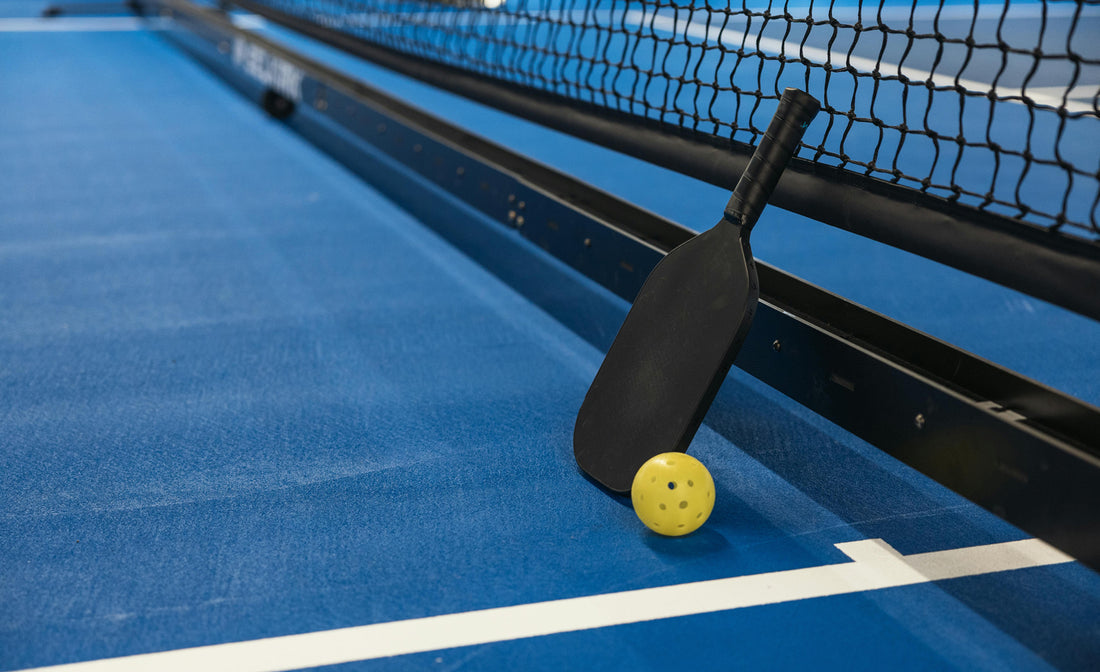
Pickleball Court Dimensions: Everything You Need to Know
Share
If you’ve ever seen a pickleball court, you might have noticed it’s much smaller than a tennis court but still big enough to pack in tons of action. Whether you’re setting up a court, learning the game, or just curious, understanding the dimensions of a pickleball court is key to appreciating what makes this sport so unique. Let’s dive into the details, in a way that’s easy to follow and helpful for beginners and enthusiasts alike!
The Basics: How Big is a Pickleball Court?
A standard pickleball court is 20 feet wide and 44 feet long, the same size for both singles and doubles play. This compact size makes pickleball less intimidating and more approachable than sports like tennis, where you’re chasing balls across a much larger space.
To break it down:
- Width: 20 feet (side to side)
- Length: 44 feet (end to end)
The court is essentially the size of a badminton doubles court, which explains its smaller, more intimate playing area.
The Non-Volley Zone (aka The Kitchen)
One of the most talked-about parts of a pickleball court is the non-volley zone, fondly called the kitchen. This area adds a fun strategic twist to the game.
- Size: The kitchen extends 7 feet from the net on both sides of the court.
- Purpose: Players cannot volley (hit the ball out of the air) while standing in this area. However, you can step into the kitchen to return a ball after it has bounced.
This rule prevents players from dominating the net with aggressive volleys, encouraging a mix of finesse and strategy instead.
The Net
The pickleball net is a bit lower than a tennis net, creating a balance between fast-paced rallies and more accessible play for beginners.
- Height at the Center: 34 inches
- Height at the Posts: 36 inches
The lower height makes it easier to clear the net, even for those who are new to the sport.
The Court Layout
To understand the court dimensions fully, let’s look at the different sections:
- Baseline: The line at the back of the court, parallel to the net. You’ll stand behind this line to serve.
- Sidelines: The lines running along the court’s length on either side. They define the width of the playing area.
- Centerline: This line divides the court into two equal halves, running perpendicular to the net. It’s important for serving since the ball must land diagonally in your opponent’s service area.
- Service Areas: Each side of the court is divided into two service boxes by the centerline. These areas are where your serve needs to land to be valid.
Indoor vs. Outdoor Courts
Whether you’re playing indoors or outdoors, the court dimensions remain the same. However, there are a few subtle differences to keep in mind:
- Indoor Courts: Typically have smoother surfaces, such as polished wood or synthetic flooring. This can affect ball bounce and speed.
- Outdoor Courts: Often have textured surfaces like asphalt or concrete, providing more grip but also subject to weather conditions.
The consistent dimensions make it easy to transition between indoor and outdoor play without needing to adjust your game.
Setting Up a Pickleball Court
If you’re thinking about creating a pickleball court at home or repurposing another court, here’s what you need:
- Find the Right Space: A badminton court, half of a tennis court, or even a flat driveway can work.
- Mark the Lines: Use tape, chalk, or a court-marking kit to draw the boundaries. Make sure the kitchen lines are clearly marked 7 feet from the net.
- Get a Net: You can buy a portable pickleball net, which is easy to set up and meets regulation height standards.
- Measure Carefully: Double-check your measurements to ensure accuracy. Small deviations can impact the flow of the game.
Why the Court Size Works
Pickleball’s smaller court is one of the reasons it’s so approachable and fun. You don’t have to run long distances to chase the ball, and the game emphasizes strategy over sheer athleticism. This makes it perfect for players of all ages and fitness levels.
The court size also means more people can play in a smaller area. Parks and recreation centers often repurpose unused tennis courts by converting them into multiple pickleball courts, accommodating more players in the same space.
A Quick Comparison: Pickleball vs. Tennis Court Dimensions
- Pickleball Court: 20 feet wide, 44 feet long
- Tennis Court: 36 feet wide, 78 feet long
As you can see, a pickleball court is less than half the size of a tennis court, which explains why it feels so much more intimate and fast-paced.
Final Thoughts
Understanding pickleball court dimensions isn’t just about numbers—it’s about appreciating why the game works so well. The smaller size keeps the action close, the kitchen adds a layer of strategy, and the net’s height makes the game accessible to everyone.
Whether you’re setting up your own court, joining a community game, or just learning the ropes, knowing the layout helps you play smarter and enjoy the game more. So grab a paddle, head to the court, and experience firsthand why pickleball is winning hearts everywhere!
